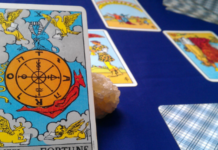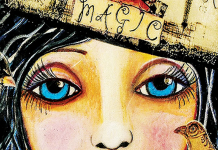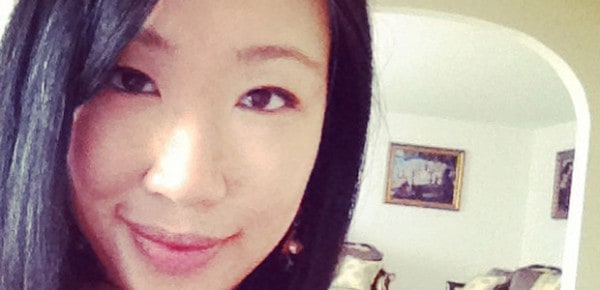
Benebell Wen’s first book, Holistic Tarot, has just been published with North Atlantic Books. Holistic Tarot is a comprehensive guide to tarot, great for beginners just learning the cards, intermediate students needing guidance to get deeper into the cards, and business tips for professionals.
In this chat, we talk about Benebell Wen‘s first deck, fortune telling, Eden Gray’s influence, and reading tarot for teddy bears.
Psyche: Holistic Tarot is a huge book – it clocks in at almost 900 pages — can you briefly describe what it’s about?
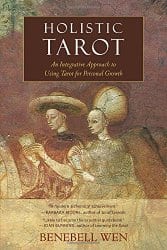 Benebell Wen: I was hoping to write some sort of treatise. “Treatise” sounds so comprehensive, and I don’t know if it covers everything that you need to know about tarot, but I do hope to cover the fundamentals of tarot for someone who’s a beginner. At the same time, it’s a book that you can keep with you in your journey as you study tarot. There are a lot of intermediate or advanced tarot techniques as well. I’m hoping Holistic Tarot is something that people will keep with them in their tarot library for their whole journey in tarot.
Benebell Wen: I was hoping to write some sort of treatise. “Treatise” sounds so comprehensive, and I don’t know if it covers everything that you need to know about tarot, but I do hope to cover the fundamentals of tarot for someone who’s a beginner. At the same time, it’s a book that you can keep with you in your journey as you study tarot. There are a lot of intermediate or advanced tarot techniques as well. I’m hoping Holistic Tarot is something that people will keep with them in their tarot library for their whole journey in tarot.
Holistic Tarot really does cover everything: you have tarot cyclopedia, as you call it, which has the basic descriptions of what the cards mean and how they can be interpreted; then you get into what you call ruminations on the cards, methods how to go deeper into what each card means to the practitioner; and how to do professional readings, including the legalistic stuff attached to the business side as well. What made you decide to include all levels of tarot, from beginning student to tarot professional in one book?
It might have been a subconscious response to a lot of the contemporary. I think a lot of people in our community kind of turn a side eye on — you can learn tarot in one hour, or easy tarot — books that treat tarot as an overly simplistic form of practice, and I don’t think that does tarot professionals any justice. Maybe I’m just dumb, but when I approach tarot, I think it’s really hard — there’s so much to it, it’s so involved — and so I wanted to write a book that paid homage to that, that treats tarot in a respectful way, treats the history, treats the predecessors — the titans who really laid the foundations of tarot as we know it today, and to pay homage to what they’ve done for us.
How did you first get involved with tarot?
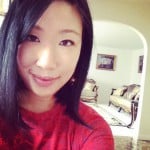 I guess it depends on if you want to talk about cartomancy or tarot. Cartomancy, I started really young, and it was almost something I gravitated towards naturally. When I was really little I had a Chinese playing deck that had the mythological characters of a particular novel on all of the cards. I used to pull out cards, and pretend that the characters on those cards said something about my life, or said something about me, and that is a kind of cartomancy.
I guess it depends on if you want to talk about cartomancy or tarot. Cartomancy, I started really young, and it was almost something I gravitated towards naturally. When I was really little I had a Chinese playing deck that had the mythological characters of a particular novel on all of the cards. I used to pull out cards, and pretend that the characters on those cards said something about my life, or said something about me, and that is a kind of cartomancy.
I also gravitated towards the occult, so when I went to the public library, and, when Barnes and Noble finally came to my small town, I always went to the occult section. First it was the cartomancy books, and then when I was 12 or 13, that’s when I made a conscious effort to learn tarot. At that time it was just dabbling, and it was more about the predictive nature. I was fascinated by the fortune telling aspect of tarot.
I became more academic in my treatment of tarot in college, and that was when I really turned back into the texts from the late 18th century and early 19th century, and became more serious about it and saw tarot as more of a divinatory form than fortune telling.
You say you no longer believe in fortune telling, or that that aspect isn’t necessarily as useful, but there are so many aspects in the book that could be considered along those lines. How do you reconcile that?
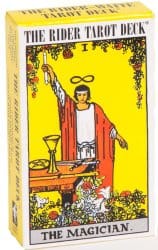 I make a clear distinction between predictive tarot and projections. Predictive tarot is more fate-centric — it’s more absolutist in terms of its treatment of what the future holds, so to speak, when the spread is laid out.
I make a clear distinction between predictive tarot and projections. Predictive tarot is more fate-centric — it’s more absolutist in terms of its treatment of what the future holds, so to speak, when the spread is laid out.
Now, when I say projective tarot, I draw the comparison to financial projections in business plans, because I do that a lot in my day job. We do a lot of predictions in the business and corporate sector, but we don’t see it as prediction, per se. Instead, it’s using known variables, putting them into tried and true algorithmic equations, and coming out with something that can credibly pass as the most likely outcome based on what we know right now.
Tarot is kind of the same way, only instead of talking about financial analysis, you’re talking about metaphysical energy analysis, and trying to get a sense of the metaphysical energies around somebody’s current life. So, based on what I’m doing right now, I can project using the synchronistic aspects of tarot, and figure out what will most likely happen based on current personality, current actions, and most likely behaviour.
Tarot can predict the future in that humans tend to be very predictable.
So, fortune telling is more on the absolutist side?
That’s how I see it. If I’m passing myself as a fortune teller, and performing a fortune telling tarot reading, then I see it as if I’m about to tell you exactly what will happen. I think that comes from the Chinese definition of fortune telling. We see it as a fate-centric absolutist form of divination, whereas I think when we’re talking about projections, I don’t see that as absolutist. I think it’s still very much about free will.
Is that where tarot analytics comes in?
Intuition is a part of our unconscious mind, and how you tap into that intuitive part of your mind is going to differ from person to person. Most people will tap into their intuition through the right side of their brain — spatial recognition, creativity, imagination, visual, colours, things like that — that’s how most people who come to tarot practice tap into the intuition.
I tend to be very left brain. I’m more analytical. I see analytic tarot as using known traditions such as astrology, numerology, and certain forms of analytics, to then tap into the intuitive part of my mind. So, analytic tarot is just reaching intuition through the left brain rather than through the right brain.
You mention in your book that Eden Gray’s Mastering the Tarot was one of the first tarot books you read. Eden Gray was the first introduction to tarot for so many. How does her work hold up for you now? Does it still influence you?
Gray espouses the gypsy fortune-telling narrative, but you have to take it in the context of when it was written. When I take it in the context of when it was written, it’s fine — at that time a lot of the texts that she was relying on, the ones in the ’70s and ’60s, they talked a lot about the gypsy narrative. Jumping in depth into tarot history didn’t start until relatively recently, when people got more into trying to be more objective about it, and taking the mysticism out of it.
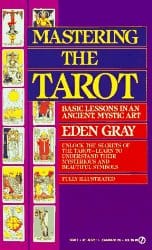 I still refer to her because she did bring tarot to a very mainstream level. Before you had all of these occult texts (and tarot was very much about the occult), and sometimes when you read those texts, I mean, I don’t understand them on the first five reads, but then Eden Gray was one of the first writers whose books you can understand on the first read.
I still refer to her because she did bring tarot to a very mainstream level. Before you had all of these occult texts (and tarot was very much about the occult), and sometimes when you read those texts, I mean, I don’t understand them on the first five reads, but then Eden Gray was one of the first writers whose books you can understand on the first read.
I guess that clarity might be something that you take from it, maybe not the history, but the clarity in the way she communicates how tarot means.
Also, the role that she served in the development of tarot over the years. Really, we wouldn’t be where we are without going through that period. Her work is so formative with what tarot is today.
I loved the idea of when you’re starting to read that you read for a teddy bear. You have a physical thing that you’re actually reading to, but it’s a teddy, so you don’t have to take it too seriously. Is it something you actually did in your practice when you first started?
I did! I have a very strong empathic connection to my teddy bears. You know when you put them places they have to be carefully placed, and I make sure they all have friends — you never put a teddy bear by him or herself. I don’t want them to be in storage alone. So yes, I’ve definitely read tarot for my teddy bears, and Hello Kitty as well. [laughing]
And now you’re a lawyer in your day job. In Holistic Tarot you mention that you took a break from tarot when you were studying law, was that related to your analytic switch?
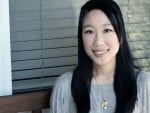 When I entered law school I was still dabbling in tarot, just as a personal practice, but it definitely was not what it used to be. I think a lot of that had to do with time. I was so busy trying to stay on top of the academic curve in school – it was law school, it’s very competitive. I didn’t have any hobbies. I had no life. Then, when you graduate from law school you’re very focused, very ambition driven, and very focused on getting ahead in your career. Then I achieved a lot of my materialistic objectives, and I lost a lot of my personal spirituality.
When I entered law school I was still dabbling in tarot, just as a personal practice, but it definitely was not what it used to be. I think a lot of that had to do with time. I was so busy trying to stay on top of the academic curve in school – it was law school, it’s very competitive. I didn’t have any hobbies. I had no life. Then, when you graduate from law school you’re very focused, very ambition driven, and very focused on getting ahead in your career. Then I achieved a lot of my materialistic objectives, and I lost a lot of my personal spirituality.
But then a friend asked me to do a tarot reading for her, and that was when things really connected for me. So, I dived right back into tarot at that point.
This background in law, legal research, and a lot of publications in law journals, actually helped write the book. It helped me organize the book, and I was able to treat tarot in a more academic way, for better or worse. I know some people don’t like that aspect of my tarot style. They don’t like that I bring a lot of academic flavour to it, but I really wanted to show that tarot’s a very difficult and dense topic that is the same as a legal treatise.
Could you tell us about your first deck and how you came by it?
I consider my very first deck to be the Tarot Nova, because that was a deck I consciously knew was tarot. A friend of mine in junior high had gifted me with that deck, and it’s a Barnes and Noble deck. I think it may be based on the Rider-Waite-Smith, but it’s a very simplistic deck, so it’s not that easy to work with.
I remember doing fortune telling, sitting there with friends to see who you’re going to date next, or what your grade will be. When you’re 12 years old those are your primary concerns, they are really important issues in life, and you don’t care about your soul purpose quite yet.
I can’t remember which came next, the Rider-Waite-Smith Tarot or the Goddess Tarot, because I bought them both close together, but I do know that the Rider-Waite-Smith didn’t resonate with me, so I worked with the Goddess Tarot after the Tarot Nova.
Do you collect decks? What do you use now?
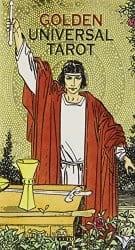 I actually gave away my Tarot Nova. I feel good about it because I gave it to someone who needed it, but it was part of my personal history, and I no longer have it.
I actually gave away my Tarot Nova. I feel good about it because I gave it to someone who needed it, but it was part of my personal history, and I no longer have it.
I use a replica of the original Rider-Waite-Smith deck when I do public readings. I also like the Golden Universal, which is based on the Rider-Waite-Smith deck, and the reason I use that is because it resonates with the clients. It’s got the gold gilding, and it’s a really pretty deck. Clients really love how it looks.
Personally, I go through phases. Right now I’m going through a Tarot of the Holy Light and Haindl Tarot phase. Before that there was the Mary-el Tarot phase, and Kim Krans’ Wild Unknown Tarot — everyone loves that deck.
I collect decks now, only because I think it’s just an addiction. I don’t use all of them. A lot of them I get, I use it like three times, and I’m like, Oh, it didn’t really click, but it’s really pretty.
Check out Benebell Wen’s excellent book Holistic Tarot, filled with in-depth information about tarot, exercises, and more, as well as her website, benebellwen.com and blog, Intermittent Thoughts.You can also find her on Twitter as @Tarotanalysis, and Instagram.


